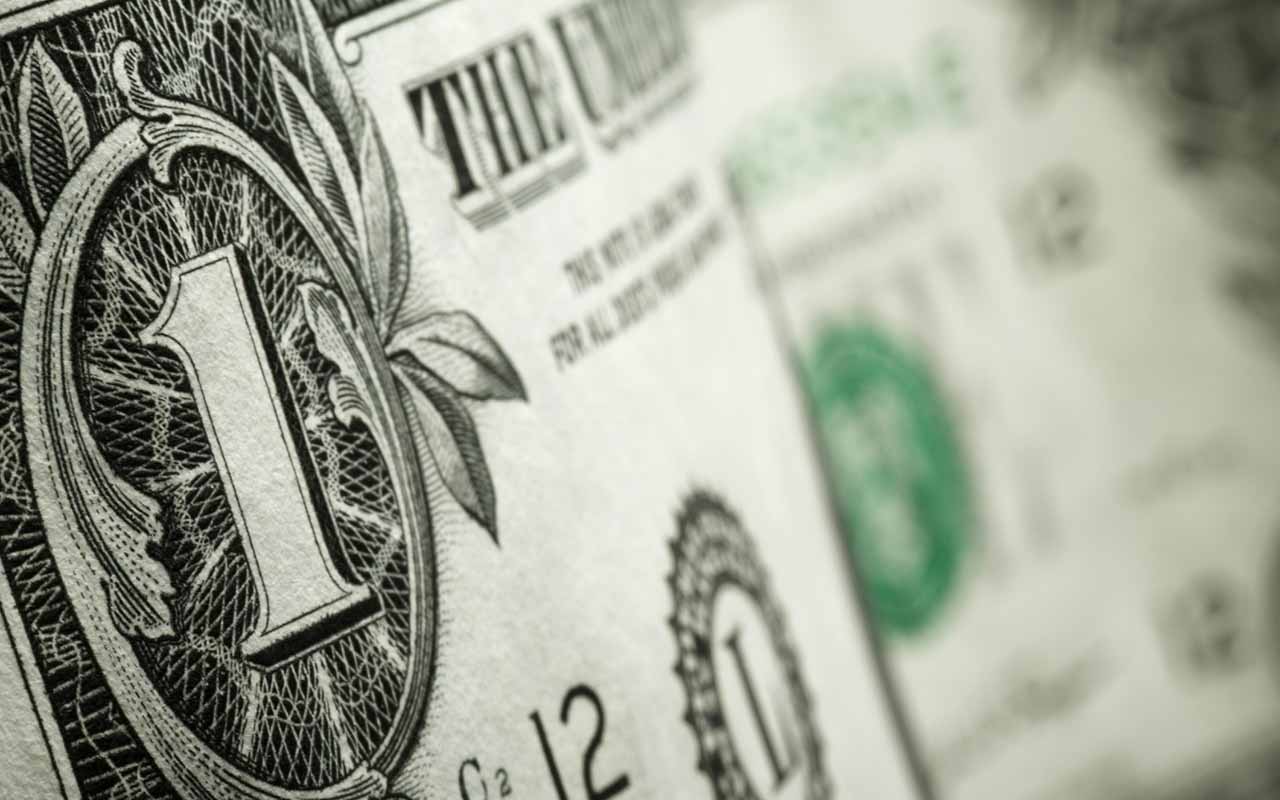The 5 Best Stock Funds for Retirement Savers in 2020
What a difference a year makes.


What a difference a year makes. On Christmas Eve 2018, the S&P 500 closed sharply down, bringing its peak-to-trough losses to 19.8% – just shy of the 20% loss that defines a bear market. Even many of the best stock funds were clobbered. You had to look hard to find any optimistic market watchers that winter.
In contrast, with the S&P 500 up a stunning 29% in the year just ended, most market gurus are expecting good tidings in 2020 – albeit much more muted gains than 2019 produced.
Last year was yet another one in which growth walloped value, even though growth stocks are significantly overpriced compared to value stocks. (Yes, growth stocks are supposed to be more expensive than value stocks – but not by nearly the gap that exists today.) Similarly, foreign stocks again lagged U.S. stocks despite being cheaper than U.S. stocks when measured against earnings and sales.
The lessons I take away from that? Overweight foreign and value stocks slightly, but don't get carried away. Don't try to time the market, and be patient with what looks attractive. Diversification is still your best friend.
With that in mind, here are my five best stock funds for retirement savers in 2020.
Returns and data are as of Jan. 21, unless otherwise noted, and are gathered for the share class with the lowest required minimum initial investment – typically the Investor share class or A share class. If you use an investment adviser or online brokerage, you may be able to buy lower-cost share classes of some of these funds. Dividend yields represent the trailing 12-month yield, which is a standard measure for equity funds.

American Funds New Perspective F1
- Market value: $100.5 billion
- Yield: 0.9%
- Expense ratio: 0.80%
- 3-year annualized return: 16.2%
- 5-year annualized return: 11.6%
- American Funds New Perspective F1 (NPFFX, $48.34) is a terrific fund that you may never have heard of. The American Funds are designed that way: often boring, but typically good to great. Until recently, you could only buy these mutual funds through a financial adviser. Nowadays, most online brokers, such as Schwab and Fidelity, offer the F1 share class to all comers.
Like all the American Funds, New Perspective employs a multi-manager system. On NPFFX, each of the seven managers are given a slice of the fund's $100 billion in assets to manage, and compensation depends largely on how each manager's slice performs over multiyear periods.
New Perspective seeks growth stocks, both here and abroad. Currently, the fund has 53% of assets in U.S. stocks and 43% in foreign stocks, with the rest in cash. Amazon.com (AMZN) and Facebook (FB) are among the top holdings. The managers here have argued for years that where a company is domiciled often bears little relationship to its sales and earnings. Nestle (NSRGY), for instance, is based in Switzerland, but only a tiny fraction of its sales are in that small nation.
Over the past 10 years, the fund has returned an annualized 11.2% – an average of 1.9 percentage points per year better than the MSCI All Country World Index (ACWI), and putting it among the 15 best stock funds in its category. What's more, NPFFX has trailed the average world-stock mutual fund just twice during that period.
Learn more about NPFFX at the American Funds provider site.

Fidelity Low-Priced Stock
- Market value: $30.4 billion
- Yield: 1.8%
- Expense ratio: 0.52%
- 3-year annualized return: 10.7%
- 5-year annualized return: 8.5%
I spent years expecting Fidelity Low-Priced Stock (FLPSX, $50.31) to collapse under its own weight. Lead manager Joel Tillinghast has built a gigantic fund with more than 800 stocks and a little more than $30 billion in assets. How could he know that many stocks well enough to invest?
I don't know, but somehow, he did.
Tillinghast looks for the same things most managers do: companies with strong balance sheets, durable competitive advantages over their peers and savvy leadership. The fund invests mainly in midsize value stocks, with 35% of assets in foreign stocks. His twist? FLPSX normally invests at least 80% of its assets in companies with share prices at or below $35.
Tillinghast has run Low-Priced Stock since inception some 30 years ago. It tends to lag in bull markets but outperform in bear markets. Over the past five years, it returned an annualized 8.5% – about 40 basis points (a basis point is one one-hundredth of a percent) better than the Russell Mid-Cap Value Index. Over the past three years, FLPSX has been one of the 10 best stock funds in its category.
Given the long bull market and Tillinghast's preference for undervalued smaller stocks, as well as foreign stocks, those are estimable results.
Learn more about FLPSX at the Fidelity provider site.

Vanguard Dividend Growth
- Market value: $41.9 billion
- Yield: 1.7%
- Expense ratio: 0.22%
- 3-year annualized return: 16.6%
- 5-year annualized return: 12.2%
- Vanguard Dividend Growth (VDIGX, $31.47) is a superior mutual fund.
Start with an expense ratio of just 0.22% annually. That makes VDIGX one of the cheapest actively managed traditional stock mutual funds you can buy.
Vanguard Dividend Growth tends to be mediocre in bull markets, but it has been a real standout in bear markets. It was about 20% less volatile than the S&P over the past five years – an indicator that it should continue to hold up relatively well in selloffs.
Returns sparkle. Over the past 15 years, the fund has returned an annualized 10.4% – an average of nearly 1 percentage point per year better than the S&P 500.
Manager Don Kilbride's secret: He owns a mere 42 stocks in this $41 billion fund – all of them focused on dividend growth, and virtually all of them solid blue chips, including UnitedHealth (UNH) and Coca-Cola (KO). He's patient, too: Kilbride holds stocks an average of about four years.
Learn more about VDIGX at the Vanguard provider site.

T. Rowe Price Health Sciences
- Market value: $14.1 billion
- Yield: 0.0%
- Expense ratio: 0.77%
- 3-year annualized return: 18.3%
- 5-year annualized return: 10.7%
I usually don't like sector funds, but health care is worth betting on. And T. Rowe Price Health Sciences (PRHSX, $83.09), is, in my view, the best of the health-care funds.
Whether Democrats or Republicans prevail in the November elections, the "smart money" is expecting Washington to lower the boom on the sky-high cost of prescription drugs, as well as other health-care products and services. I've been writing about health-care costs since the mid-1970s, and I'm confident that the smart money is just as wrong as it was back then – when all the experts said that medical costs simply couldn't keep rising the way they had been.
Why am I so confident that health care will soak up more dollars than ever this year? It's a no-brainer. Start with the aging baby boomers. There are a lot of us out there, and the older we get, the more likely we are to get sick and need medical care.
Next, consider the advances in medical science. We're gone from mapping the human genome almost two decades ago to the beginnings of actually inserting disease-curing genes into patients' cells. Yes, it's going to be incredibly expensive. No one will want to pay for it. But someone will – whether it's insurance companies, the government or individuals.
T Rowe Price Health Sciences focuses on innovative drug companies more than most health-care companies. It typically holds a third or more of assets in biotech firms, compared to less than 20% for the average health fund. That number is 37% at the moment, and includes top-10 holdings Vertex Pharmaceuticals (VRTX) and Amgen (AMGN).
Look at how that has paid off. Over the past 10 years, The T. Rowe fund returned an annualized 19% – a stunning average of 4 percentage points per year better than the S&P 1500 Health Care index. Its 15.4% average annual return over the past 15 years similarly outperform that index. In both cases, PRHSX ranks as the absolute best stock fund in its category.
Learn more about PRHSX at the T. Rowe Price provider site.

American Funds New World F1
- Market value: $45.3 billion
- Yield: 1.1%
- Expense ratio: 0.99%
- 3-year annualized return: 13.3%
- 5-year annualized return: 7.8%
My last pick is American Funds New World F1 (NWFFX, $71.22).
In keeping with the American Funds habit of avoiding flashy products, this nominally emerging-markets stock fund actually has less than half of its assets invested in EM stocks and bonds. It seeks to profit from emerging markets, of course, but it does so not just through EM-domiciled holdings, but also in stocks of developed-markets companies that do lots of business in emerging markets. So top-10 holdings include not just pure plays such as Indian conglomerate Reliance Industries and Chinese internet-and-gaming firm Tencent (TCEHY), but also American multinationals such as Microsoft (MSFT) and Mastercard (MA).
Emerging markets have badly lagged U.S. stocks over the past 10 years, demonstrating the wisdom of New World's approach. Over that span, New World has returned an annualized 6.6% – an average of 2.7 percentage points per year better than the MSCI Emerging Markets Index.
Foreign stocks, including emerging markets, have shown some life in recent months. There's no telling whether that's a head fake or the beginning of something more significant. But at some point, emerging markets will come back – and those who put some cash into New World will be glad they stayed put.
Learn more about NWFFX at the American Funds provider site.
Steve Goldberg is an investment adviser in the Washington, D.C., area.
Profit and prosper with the best of Kiplinger's advice on investing, taxes, retirement, personal finance and much more. Delivered daily. Enter your email in the box and click Sign Me Up.

-
 Nasdaq Sinks 418 Points as Tech Chills: Stock Market Today
Nasdaq Sinks 418 Points as Tech Chills: Stock Market TodayInvestors, traders and speculators are growing cooler to the AI revolution as winter approaches.
-
 23 Last-Minute Gifts That Still Arrive Before Christmas
23 Last-Minute Gifts That Still Arrive Before ChristmasScrambling to cross those last few names off your list? Here are 23 last-minute gifts that you can still get in time for Christmas.
-
 The Rule of Compounding: Why Time Is an Investor's Best Friend
The Rule of Compounding: Why Time Is an Investor's Best FriendDescribed as both a "miracle" and a "wonder," compound interest is simply a function of time.
-
 Nasdaq Sinks 418 Points as Tech Chills: Stock Market Today
Nasdaq Sinks 418 Points as Tech Chills: Stock Market TodayInvestors, traders and speculators are growing cooler to the AI revolution as winter approaches.
-
 Stocks Chop as the Unemployment Rate Jumps: Stock Market Today
Stocks Chop as the Unemployment Rate Jumps: Stock Market TodayNovember job growth was stronger than expected, but sharp losses in October and a rising unemployment rate are worrying market participants.
-
 Stocks Struggle Ahead of November Jobs Report: Stock Market Today
Stocks Struggle Ahead of November Jobs Report: Stock Market TodayOracle and Broadcom continued to fall, while market participants looked ahead to Tuesday's jobs report.
-
 AI Stocks Lead Nasdaq's 398-Point Nosedive: Stock Market Today
AI Stocks Lead Nasdaq's 398-Point Nosedive: Stock Market TodayThe major stock market indexes do not yet reflect the bullish tendencies of sector rotation and broadening participation.
-
 Dow Adds 646 Points, Hits New Highs: Stock Market Today
Dow Adds 646 Points, Hits New Highs: Stock Market TodayIt was "boom" for the Dow but "bust" for the Nasdaq following a December Fed meeting that was less hawkish than expected.
-
 Dow Rises 497 Points on December Rate Cut: Stock Market Today
Dow Rises 497 Points on December Rate Cut: Stock Market TodayThe basic questions for market participants and policymakers remain the same after a widely expected Fed rate cut.
-
 JPMorgan's Drop Drags on the Dow: Stock Market Today
JPMorgan's Drop Drags on the Dow: Stock Market TodaySmall-cap stocks outperformed Tuesday on expectations that the Fed will cut interest rates on Wednesday.
-
 Stocks Slip to Start Fed Week: Stock Market Today
Stocks Slip to Start Fed Week: Stock Market TodayWhile a rate cut is widely expected this week, uncertainty is building around the Fed's future plans for monetary policy.
